



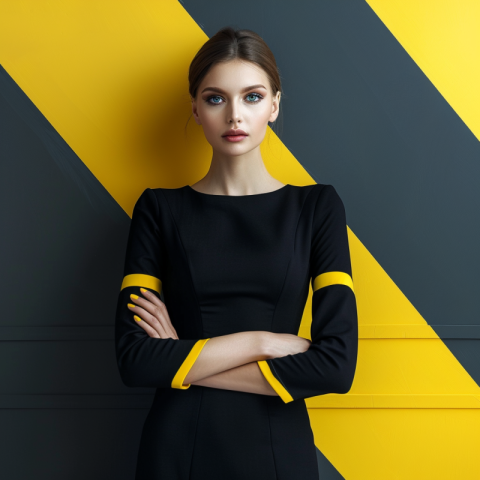
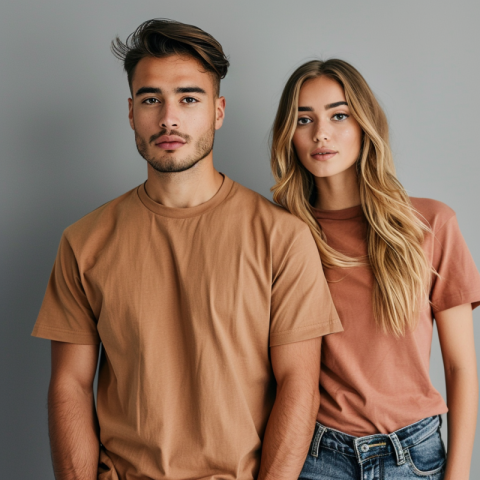

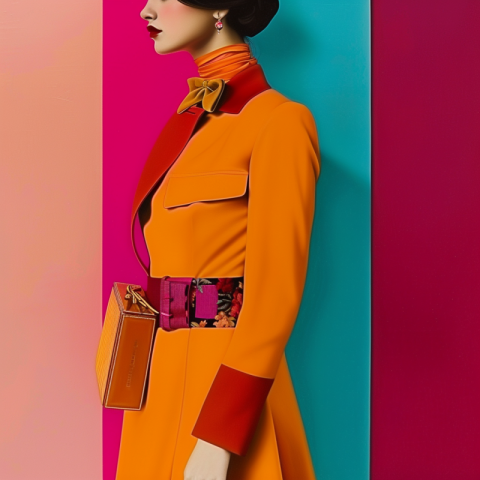
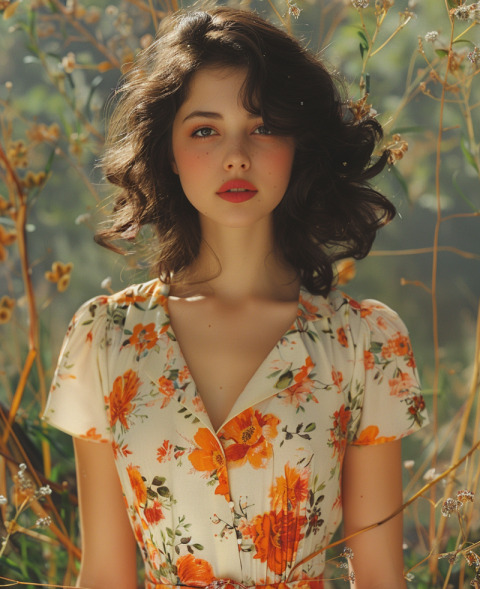

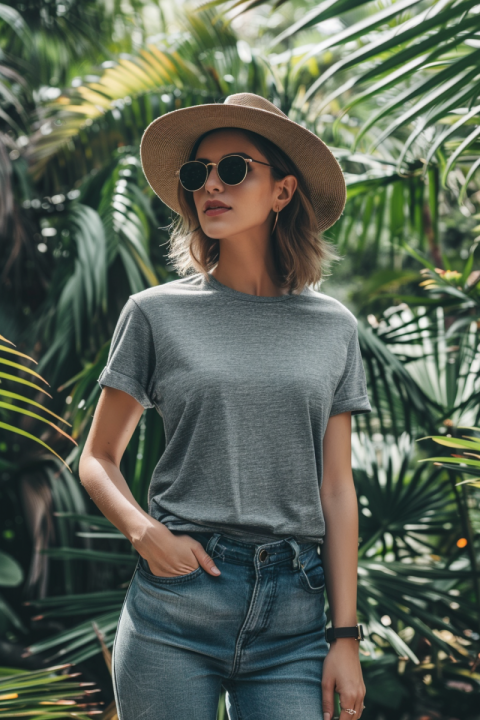

Women's Fashion: A Century of Style Evolution and Empowerment
Women's fashion is a dynamic and ever-evolving reflection of social, cultural, and economic changes. Over the past century, women's fashion has undergone a dramatic transformation, mirroring women's evolving roles and identities. From the restrictive corsets of the early 1900s to the diverse and empowering styles of today, women's fashion tells a story of liberation, self-expression, and the pursuit of individuality.
1. The 1900s-1910s: Breaking Free from Restraint
- The early 1900s saw women's fashion dominated by the remnants of Victorian styles, with long skirts, high necklines, and tight corsets that created an hourglass figure.
- The Gibson Girl, a creation of illustrator Charles Dana Gibson, represented the ideal of feminine beauty at the time, with her upswept hair and tailored shirtwaist blouses.
- As the decade progressed, designers like Paul Poiret began to liberate women from the corset, introducing looser, more flowing silhouettes inspired by Orientalism.
- The hobble skirt, a skirt so narrow at the ankles that it restricted movement, became a controversial trend.
2. The Roaring Twenties: Flappers and the Rise of Modernity
- The 1920s, also known as the Jazz Age, witnessed a radical shift in women's fashion.
- The flapper emerged as a symbol of youthful rebellion, rejecting Victorian constraints in favor of shorter hemlines, dropped waistlines, and bobbed hair.
- Designers like Coco Chanel popularized comfortable and stylish garments like the little black dress, jersey knitwear, and costume jewelry.
- Women's fashion reflected the changing social landscape, as women gained more independence and entered the workforce in greater numbers.
3. The 1930s: Hollywood Glamour and Depression-Era Austerity
- The Great Depression had a significant impact on women's fashion in the 1930s, leading to more practical and affordable styles.
- Hemlines dropped back down, and the silhouette became more slender and streamlined.
- Hollywood glamour influenced fashion, with stars like Greta Garbo and Marlene Dietrich setting trends with their elegant gowns and tailored suits.
- The bias cut, a technique of cutting fabric diagonally, was popularized by designer Madeleine Vionnet, creating dresses that draped beautifully on the body.
4. The 1940s: Wartime Utility and the New Look
- World War II dominated the first half of the 1940s, and women's fashion reflected the wartime restrictions and emphasis on practicality.
- Fabrics were rationed, leading to simpler designs and shorter skirts.
- Women adopted more masculine styles, such as tailored suits and trousers, as they took on traditionally male roles in the workforce.
- After the war, Christian Dior's "New Look," introduced in 1947, revolutionized women's fashion with its full skirts, cinched waists, and rounded shoulders, ushering in an era of renewed femininity.
5. The 1950s: Suburban Style and the Feminine Ideal
- The 1950s saw a return to more traditional gender roles, and women's fashion reflected this shift.
- The ideal of the suburban housewife, impeccably dressed in full skirts, fitted sweaters, and pearls, became prevalent.
- Designers like Christian Dior continued to dominate the fashion scene, along with other notable designers such as Cristobal Balenciaga and Hubert de Givenchy.
- Teenagers emerged as a distinct fashion market, with styles like poodle skirts and saddle shoes gaining popularity.
6. The 1960s: Youthquake and the মিনি স্কার্ট
- The 1960s was a decade of radical change in women's fashion, driven by the youth culture and the spirit of rebellion.
- The miniskirt, popularized by designer Mary Quant, became a symbol of youthful liberation and challenged traditional notions of femininity.
- Other trends included bold geometric prints, vibrant colors, and synthetic fabrics like polyester.
- The "mod" style, originating in London, featured clean lines, tailored suits, and shift dresses.
- The hippie movement brought a more bohemian aesthetic, with flowing fabrics, floral prints, and ethnic-inspired designs.
7. The 1970s: Disco Fever and the Rise of Casual Style
- The 1970s saw a diverse range of fashion trends, from the glamorous styles of the disco era to the more casual and natural looks of the late 70s.
- Bell bottoms, platform shoes, and shimmering fabrics were popular during the disco craze.
- Designers like Halston created sleek and sophisticated designs that captured the spirit of Studio 54.
- The late 70s saw the rise of more casual styles, including jeans, t-shirts, and athletic wear.
8. The 1980s: Power Dressing and Excess
- The 1980s was a decade of excess and bold fashion statements.
- "Power dressing" became popular among working women, with shoulder pads, tailored suits, and bold colors symbolizing ambition and success.
- Designers like Giorgio Armani and Donna Karan created iconic power suits for women.
- Other trends included bright neon colors, leg warmers, and oversized accessories.
- The influence of music and pop culture was evident in styles inspired by artists like Madonna and Cyndi Lauper.
9. The 1990s: Grunge, Minimalism, and the Supermodel Era
- The 1990s saw a reaction against the excess of the 1980s, with trends like grunge and minimalism gaining popularity.
- Grunge, inspired by the Seattle music scene, featured ripped jeans, flannel shirts, and combat boots.
- Minimalism emphasized clean lines, simple silhouettes, and a neutral color palette.
- The supermodel era brought a new level of glamour to fashion, with models like Naomi Campbell, Cindy Crawford, and Linda Evangelista becoming global icons.
10. The 2000s-Present: Fast Fashion, Athleisure, and Individuality
- The 21st century has seen the rise of fast fashion, with retailers like Zara and H&M offering affordable and trendy clothing.
- Athleisure, a blend of athletic and leisure wear, has become a major trend, reflecting a growing emphasis on comfort and fitness.
- Social media has had a profound impact on women's fashion, with influencers and bloggers shaping trends and creating new avenues for fashion consumption.
- Today, women's fashion is more diverse and individualized than ever before, with a focus on personal style and self-expression.
Conclusion:
Women's fashion has undergone a remarkable transformation over the past century, reflecting the changing roles, identities, and aspirations of women. From the restrictive styles of the early 1900s to the diverse and empowering choices of today, women's fashion has been a powerful tool for self-expression, social commentary, and cultural change. As women continue to break barriers and redefine their place in the world, fashion will undoubtedly continue to evolve, reflecting their ever-expanding possibilities and celebrating their individuality. The history of women's fashion is not just a story of changing hemlines and silhouettes; it's a story of empowerment, liberation, and the ongoing pursuit of self-definition.
Women's fashion, fashion history, fashion trends, 1920s fashion, 1950s fashion, 1960s fashion, 1980s fashion, 1990s fashion, 2000s fashion, flappers, Gibson Girl, Coco Chanel, Christian Dior, New Look, miniskirt, Mary Quant, power dressing, grunge, minimalism, fast fashion, athleisure, fashion icons, fashion designers, fashion weeks, street style, vintage fashion, sustainable fashion, ethical fashion, body positivity, fashion influencers, fashion bloggers, online shopping, plus size fashion, petite fashion, maternity fashion.

